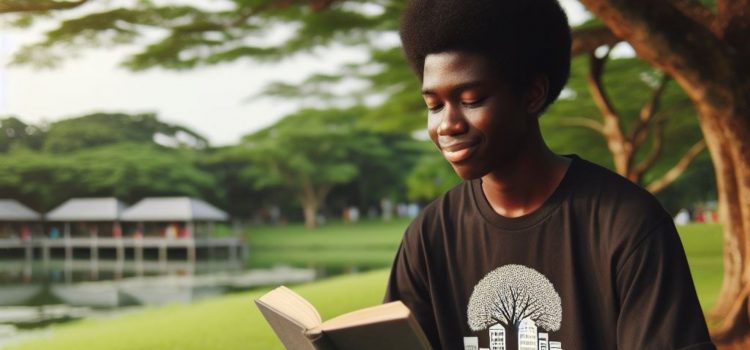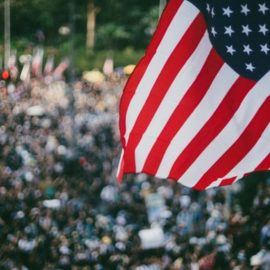
How does Ta-Nehisi Coates describe his experience with racial identity in Between the World and Me? How does his book shed light on the experiences of Black Americans overall?
In Between the World and Me, Ta-Nehisi Coates describes coming to terms with racial discrimination and violence early in life, then finding community and resilience among Black peers, especially at Howard University. He also describes his own parenting decisions in light of his experiences.
Here’s more from Ta-Nehisi Coates in Between the World and Me.
About Between the World and Me
In his book Between the World and Me, Ta-Nehisi Coates explores his personal growth, considering how experiences of violence, fear, and intellectual revelations shaped his perception of racial identity.
A Journey of Self-Discovery: Developing Racial Consciousness
Coates grew up in Baltimore, a city characterized by pervasive violence and fear. He observed common patterns in physical confrontations among young Black teenagers. The young males from his neighborhood demonstrated their fear through their behavior and attire, serving as armor in their surroundings. Coates himself experienced brutality and intimidation, and he sought to understand their origins within the broader framework of American society.
He recounts a time when a young male displayed a firearm, highlighting the fragility of his personal security and physical well-being. The constant threat to his physical safety and the understanding that violent outbreaks could occur unexpectedly, even during a routine afternoon, profoundly impacted him. He confronted the fear and implications of the event in solitude, opting to keep the traumatic experience private rather than discussing it with his parents or teachers.
Coates keenly perceived the sharp differences between his life experiences and those of white children living in suburban neighborhoods. He describes his early awareness that violence and fear constantly characterized his segment of the American experience, in contrast to the tranquil life in white neighborhoods.
Ta-Nehisi Coates at Howard University
Howard University marked a pivotal stage in Coates’ journey of self-discovery. He experienced an intellectual and emotional awakening, where he had access to a significant library featuring extensive works on African lineage and immersed himself deeply in the history and culture of African Americans. Coates characterizes Howard University as his “Mecca,” a center that attracted the energy from diverse African communities and brought together many gifted Black individuals.
During his time at Howard University, Coates committed to extensive reading and research, concentrating on works written by and concerning Black people. He sought enlightenment and liberty by exploring his own interests and through reading, despite being constrained by insufficient knowledge and comprehension. Coates resonated with Malcolm X’s journey towards authenticity, realizing that his own path to fully claiming his physical self was unfolding in a manner previously unimagined.
Coates explored intricate inquiries concerning history, culture, and the importance of African American identity. He sought to understand the broader implications of his arrest and its connection to the concept referred to as the “Dream,” along with the experiences of people outside his community. His professors encouraged him at Howard University to confront challenging truths about history and Black identity.
(Shortform note: the “Dream” in the text refers to an idealized version of American society that often ignores or downplays the systemic racism and struggles faced by Black individuals. It represents a narrative that perpetuates a false sense of equality and opportunity while disregarding the harsh realities of racial discrimination and violence. Coates challenges this notion by highlighting how the “Dream” fails to acknowledge the lived experiences and historical injustices endured by Black Americans. The concept serves as a critique of societal denial and the perpetuation of racial inequalities.)
Ta-Nehisi Coates’ Son
In Between the World and Me, Coates articulates profound worry regarding the well-being and prospects of his son, acknowledging the severe challenges that African American young people encounter. He contemplates the enduring impact of systemic racism and his wish to shield his son from its consequences. Coates’ exploration relates to a broader objective of crafting a new narrative and history that recognizes the challenges and aesthetics of Black identity, which may also be seen as an effort to enhance comprehension and existence for his child.
He reflects on his efforts to provide a different upbringing for his son, influenced by the varied manifestations of affection and identity he observed. He shares a moment of vulnerability with his mother, expressing fear before traveling alone, which signifies his effort to expand his own worldview, potentially as an example for his child.
Coates recognizes the unique status of his son. He understands the importance of exposing his son to diverse experiences and people, as shown in his thoughts about the culturally rich setting known as The Mecca at Howard University.
He aims to broaden his child’s perspective and introduce him to diverse experiences that go beyond his own childhood experiences. Coates traveled with his son to Paris to expose him to a new way of life, one that was not confined by the fears that influenced his own childhood. In the book, he discusses how it expanded his and his son’s worldview to a broader perspective on existence.
(Shortform note: Systemic racism refers to institutional practices that perpetuate racial discrimination. It is ingrained in societal structures like laws, policies, and practices, leading to unequal treatment based on race. This perpetuation can occur through various means, such as biased law enforcement practices or discriminatory policies. Understanding systemic racism involves recognizing how historical injustices continue to impact marginalized communities today.)






